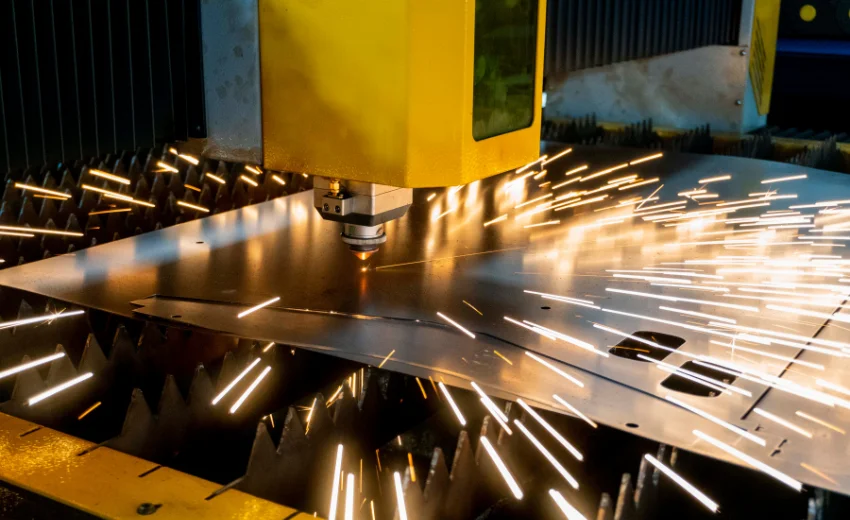The construction industry is at the forefront of transformation, driven by technological advancements reshaping how projects are designed, managed, and executed. With 2025 on the horizon, integrating innovative technologies is not just a competitive advantage but a necessity to meet the demands of modern construction. From enhancing efficiency and safety to reducing environmental impact, these trends are paving the way for a brighter, more sustainable future in construction.
In this article, we explore the top construction technology trends that are expected to profoundly impact the industry in 2025 and beyond.
- Building Information Modeling (BIM) Takes Center Stage
Building Information Modeling (BIM) has been a game-changer in the construction industry, and its role is set to expand even further in 2025. BIM involves creating and managing digital representations of a building’s physical and functional characteristics. It facilitates collaboration among architects, engineers, contractors, and other stakeholders, ensuring everyone works from the same information.
Why BIM is Crucial for 2025
- Enhanced Collaboration: BIM creates a shared platform for all stakeholders, reducing misunderstandings and conflicts during construction.
- Cost Efficiency: By identifying potential design flaws early, BIM helps prevent costly revisions and delays.
- Sustainability: BIM enables precise material estimation and waste reduction, contributing to greener construction practices.
As BIM evolves, technologies like 7D BIM, which incorporates facility management and lifecycle analysis, will become standard, further enhancing the value it brings to construction projects.
- The Rise of Robotics and Automation
Automation is transforming construction sites into hubs of efficiency and precision. Robotics is increasingly being used for traditionally labor-intensive, hazardous, or time-consuming tasks.
Critical Applications of Robotics in Construction
- Bricklaying Robots: Machines like SAM (Semi-Automated Mason) can lay bricks faster and more consistently than human workers.
- Concrete Printing: 3D printers capable of producing complex concrete structures speed up construction timelines while reducing costs.
- Demolition Robots: Compact, remotely operated robots revolutionize demolition work, enhancing safety and precision.
In 2025, robotics and automation will play an even larger role in addressing labor shortages, boosting productivity, and making construction sites safer and more efficient.
- Green Construction Technologies Lead the Way
Sustainability is no longer optional—it’s an imperative. Green construction technologies are helping companies meet regulatory requirements, reduce their environmental footprint, and appeal to environmentally conscious clients.
Sustainable Technologies Making an Impact
- Energy-Efficient Building Materials: Innovations like self-healing concrete and aerogels improve insulation and reduce energy consumption.
- Renewable Energy Integration: Solar panels, wind turbines, and geothermal systems are becoming standard features in new constructions.
- Smart Water Management: Technologies like greywater recycling systems are addressing water scarcity issues.
As the industry adopts a greener mindset, companies that prioritize sustainability will find themselves ahead of the curve, both environmentally and economically.
- Artificial Intelligence (AI) and Machine Learning for Smarter Decisions
AI is rapidly becoming an essential tool in construction, aiding everything from design optimization to predictive maintenance. Machine learning algorithms can analyze vast amounts of data, providing actionable insights that improve efficiency and safety.
AI in Construction: Key Benefits
- Project Planning: AI-driven tools help predict project timelines and costs more accurately.
- Risk Mitigation: AI systems analyze data from past projects to identify potential risks and suggest preventive measures.
- Real-Time Monitoring: AI-equipped drones can monitor progress, identify bottlenecks, and ensure quality control.
By 2025, AI will become integral to project management, offering solutions that adapt quickly to changing conditions and challenges.
- Internet of Things (IoT) for Connected Construction Sites
IoT enables the creation of “smart” construction sites, where devices, equipment, and personnel are interconnected through a network. This connectivity improves communication, safety, and efficiency.
IoT Applications in Construction
- Equipment Tracking: IoT sensors monitor equipment usage, maintenance needs, and location, reducing downtime.
- Safety Monitoring: Wearable IoT devices alert workers to real-time potential hazards.
- Intelligent Buildings: IoT-enabled systems allow buildings to monitor and optimize energy use, temperature, and security post-construction.
With IoT, construction sites in 2025 will be more responsive and intelligent, ensuring that projects are completed on time and within budget.
- Augmented Reality (AR) and Virtual Reality (VR) for Enhanced Visualization
AR and VR technologies are no longer limited to gaming—they are becoming essential tools in construction. These technologies offer immersive experiences that improve project planning and execution.
How AR and VR are Transforming Construction
- Design Visualization: AR allows clients and teams to visualize designs in real-world settings before construction begins.
- Training and Safety: VR simulations provide a safe environment for workers to practice operating equipment and handling emergencies.
- Remote Collaboration: Teams can use AR and VR to collaborate on designs and inspections, reducing the need for on-site visits.
By incorporating AR and VR, construction companies can bridge the gap between imagination and reality, ensuring that designs align with client expectations.
- Prefabrication and Modular Construction Gain Momentum
Prefabrication and modular construction are not new, but technological advancements make them more efficient and appealing. These methods involve constructing components off-site and assembling them on-site, significantly reducing construction timelines.
Benefits of Prefabrication and Modular Construction
- Time Efficiency: Building components in a controlled environment minimizes weather-related delays.
- Cost Savings: Bulk manufacturing reduces material costs and waste.
- Flexibility: Modular designs can be scaled or modified to meet changing requirements.
The demand for prefabrication will continue to rise in 2025, driven by the need for faster, more sustainable construction solutions.
Conclusion: Embracing the Future of Construction
The construction industry is undergoing a technological revolution, and 2025 promises to be a pivotal year for innovation. Trends like BIM, robotics, AI, and green construction technologies are enhancing efficiency and addressing critical challenges such as labor shortages, safety concerns, and environmental impact.
Construction companies must embrace these technologies and adapt to the changing landscape to stay competitive. Investing in innovation today will ensure long-term success and position businesses as leaders in an increasingly technology-driven industry.
The future of construction is here—bright, sustainable, and driven by cutting-edge technology. By staying ahead of these trends, companies can meet the demands of modern construction and shape the industry’s future.

